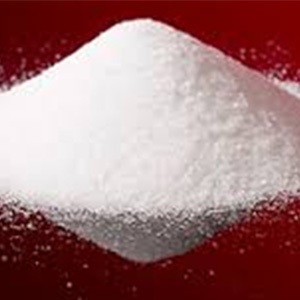
C4H6O6 --- 150.1--- 87-69-4
Ph Eur
DEFINITION
(2R,3R)-2,3-Dihydroxybutanedioic acid.
Content: 99.5 per cent to 101.0 per cent (dried substance).
CHARACTERS
Appearance: White or almost white, crystalline powder or colourless crystals.
Solubility: Very soluble in water, freely soluble in ethanol (96 per cent).
IDENTIFICATION
A. Solution S (see Tests) is strongly acid.
B. It gives the reactions of tartrates.
TESTS
Solution S: Dissolve 5.0 g in distilled water and dilute to 50 ml with the same solvent.
Appearance of solution: Solution S is clear and not more intensely coloured than reference solution.
Specific optical rotation: + 12.0 to + 12.8 (dried substance)
Oxalic acid: Maximum 350 ppm, calculated as anhydrous oxalic acid.
Chlorides: Maximum 100 ppm.
Sulphates: Maximum 150 ppm.
Calcium: Maximum 200 ppm.
Heavy metals: Maximum 10 ppm.
Loss on drying: Maximum 0.2 per cent, determined on 1.000 g by drying in an oven at 105 °C
Sulphated ash: Maximum 0.1 per cent, determined on 1.0 g.
ASSAY
Dissolve 0.650 g in 25 ml of water. Titrate with 1 M sodium hydroxide using 0.5 ml of
PhPh solution as indicator, until a pink colour is obtained.
1 ml of 1 M sodium hydroxide is equivalent to 75.05 mg of C4H6O6.
C4H6O6 150.09
Butanedioic acid, 2,3-dihydroxy-; Butanedioic acid, 2,3-dihydroxy-, [R-(R*,R*)]-.
Tartaric acid; L -(+)-Tartaric acid [526-83-0] and [87-69-4].
Tartaric Acid, dried over phosphorus pentoxide for 3 hours, contains not less than 99.7 percent and not more than 100.5 percent of C4H6O6.
Identification:
A: It responds to the tests for Tartrate.
B: When ignited, it gradually decomposes, emitting an odor resembling that of burning sugar
(distinction from citric acid).
Specific rotation: between +12.0 and +13.0 .
Test solution: 200 mg per mL, in water.
Loss on drying: Dry it over phosphorus pentoxide for 3 hours: it loses not more than 0.5% of its weight.
Residue on ignition: not more than 0.1%.
Limit of oxalate: Nearly neutralize 10 mL of a solution of it (1 in 10) with 6 N ammonium hydroxide, and add 10 mL of calcium sulfate TS: no turbidity is produced.
Sulfate: To 10 mL of a solution (1 in 100) add 3 drops of hydrochloric acid and 1 mL of barium chloride: no turbidity is produced.
Heavy metals: 0.001%.
Assay: Place about 2 g of Tartaric Acid, previously dried and accurately weighed, in a conical flask. Dissolve it in 40 mL of water, add PhPh TS, and titrate with 1 N sodium hydroxide VS. Each mL of 1 N sodium hydroxide is equivalent to 75.04 mg of C4H6O6.
L(+)-Tartaric Acid
C4H6O6 Formula wt 150.09
CAS: [87-69-4]
FEMA: 3044
DESCRIPTION
Tartaric Acid occurs as colorless or translucent crystals or as a white, fine to granular, crystalline powder. It is stable in air. One gram dissolves in 0.8 mL of water at 25°, in about 0.5 mL of boiling water, and in about 3 mL of alcohol. Its solutions are dextrorotatory.
Function: Acidifier; sequestrant; flavoring agent.
REQUIREMENTS
Identification :A sample solution gives positive tests for Tartrate.
Assay: Not less than 99.7% and not more than 100.5% of C4H6O6 after drying.
Lead: Not more than 2 mg/kg.
Loss on Drying: Not more than 0.5%.
Optical (Specific) Rotation: Between +12.0° and +13.0°.
Oxalate: Passes test.
Residue on Ignition: Not more than 0.05%.
Sulfate: Passes test.
Tartaric Acid Analytical Reagent Grade
2,3-Dihydroxybutanedioic Acid
HOOC(CHOH)2COOH
Formula Wt 150.0
CAS Number 87-69-4
REQUIREMENTS
Assay: Not less than 99.0%
MAXIMUM ALLOWABLE
Insoluble matter: 0.005%
Residue after ignition: 0.02%
Chloride (Cl): 0.001%
Oxalate (C2O4): Passes test
Phosphate (PO4): 0.001%
Sulfur compounds (as SO4): 0.002%
Heavy metals (as Pb): 5 ppm
Iron (Fe): 5 ppm